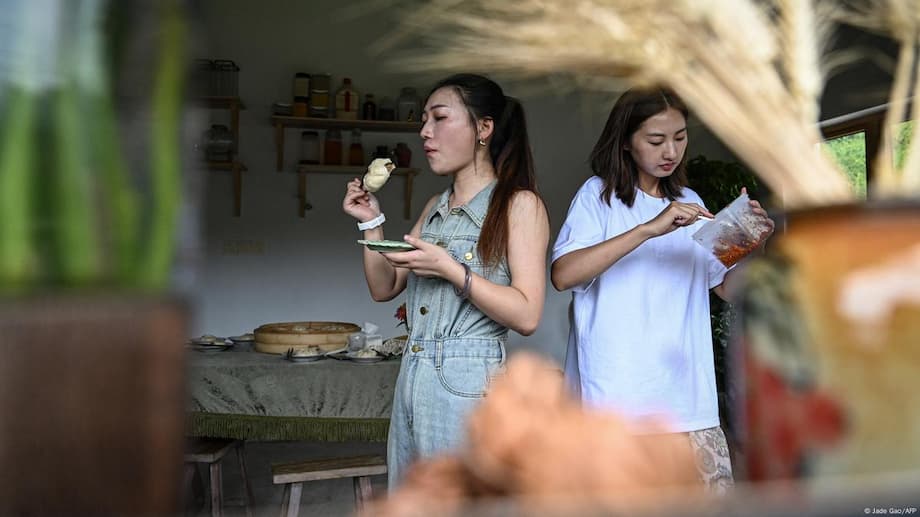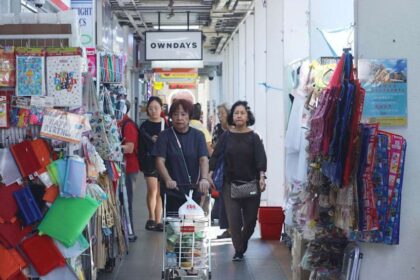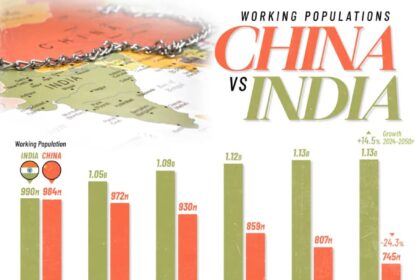Women-Only Co-Living Spaces Flourish in China, Offering Safety and Community
Growing demand for female-only communities reflects changing social attitudes and women’s pursuit of safety, independence, and support.
In Zhejiang province, eastern China, a new trend is taking root: women are gathering in rural co-living spaces designed exclusively for them. These communities, such as Keke’s Imaginative Space near Hangzhou, have become sanctuaries where women can escape social pressures, workplace harassment, and the expectations of traditional family roles. The rise of these women-only environments marks a significant shift in Chinese society, as more women seek spaces where they can feel safe, supported, and free to be themselves.
- Women-Only Co-Living Spaces Flourish in China, Offering Safety and Community
- Why Are Women-Only Spaces Emerging in China?
- Inside the Communities: Daily Life and Activities
- The Role of Social Media and Economic Independence
- Addressing Criticism and Misconceptions
- Broader Social Impact and Future Prospects
- Key Points
At Keke’s Imaginative Space, laughter and conversation fill the air as women prepare steamed buns together in a kitchen overlooking the mountains. For a modest nightly fee—about 30 yuan (roughly $4.17)—participants enjoy not only accommodation but also a sense of belonging and relief from judgment. The founder, Chen Yani, known as Keke, created the space after experiencing harassment from men in the workplace, which left her unable to work comfortably. Her vision was to build a relaxed, safe environment where women could work, rest, and connect without apprehension.
These communities are not isolated cases. Across China, demand for gender-segregated spaces—ranging from bars and gyms to hostels and co-working hubs—is on the rise. Women are leveraging their growing economic independence and educational opportunities to prioritize their well-being and explore alternative lifestyles. Social media platforms, particularly Xiaohongshu (also known as Rednote), have played a crucial role in connecting women to these new possibilities and helping them find like-minded communities.
Why Are Women-Only Spaces Emerging in China?
The emergence of women-only co-living spaces in China is rooted in a complex mix of social, economic, and cultural factors. Many women face persistent challenges, including workplace discrimination, sexual harassment, and the burden of traditional family expectations. Within families, women are often expected to care for children, grandparents, and manage household chores, all while maintaining their professional responsibilities. These pressures can leave women feeling isolated and overwhelmed.
For Chen Yani, the catalyst was personal experience. She told reporters,
“I encountered various degrees of harassment from men, to the point where I often found myself unable to work normally. I started thinking about what a safe and relaxed work environment would look like—a place where I wouldn’t feel apprehensive.”
Her solution was to renovate a house in Lin’an, a suburb of Hangzhou, and invite women to join her for a stay over the Chinese New Year holiday. Twelve women attended, seeking peace, community, and freedom from societal expectations. Some wanted a change of scenery, while others hoped to escape intrusive questions from relatives about marriage and children.
Participant Zhang Wenjing, 43, described the appeal of these spaces:
“An all-women environment makes me feel safe. Among women, we talk more easily about certain things.”
Another participant, Chen Fangyan, 28, highlighted the sense of physical comfort:
“Not being forced to wear a bra is already a kind of freedom.”
These comments reflect a broader desire among Chinese women for environments where they can relax, speak openly, and shed the roles imposed on them by family and society.
Inside the Communities: Daily Life and Activities
Women-only co-living spaces in China are designed to foster a sense of community and mutual support. At Keke’s Imaginative Space, the atmosphere is lively and welcoming. Women play board games, drink coffee, and share meals together. The rustic furniture and calligraphy on the walls give the property the feel of a boutique hotel, while the surrounding nature offers a peaceful retreat from city life.
Participants pay a nightly fee, with costs increasing after several days to encourage short stays and keep the community dynamic. Some spaces, like Her Space in Xiuxi village, require a membership fee—3,980 yuan (about $550)—to join the club. Over 120 women have already signed up, drawn by the promise of a spiritual haven and a place to turn to in difficult times.
Yang Yun, founder of Her Space, explained her motivation:
“The idea was to ensure women always have a place to go. If a woman loses her job, her parents, has an argument with her husband, or feels exhausted by city life, she knows she can come here and find some warmth.”
These communities are not just about physical safety. They offer emotional support, opportunities for personal growth, and a chance to rediscover a connection with nature. Activities often include group cooking, hiking, and creative workshops. The absence of men allows participants to speak freely about intimate topics and support each other through shared experiences.
The Role of Social Media and Economic Independence
Social media has played a pivotal role in the growth of women-only spaces in China. Platforms like Xiaohongshu (Rednote) allow women to share their experiences, discover alternative lifestyles, and connect with others seeking similar communities. These online networks have made it easier for women to organize events, recruit new members, and spread the word about safe spaces.
Women’s increasing economic independence is another driving force. As more women pursue higher education and professional careers, they have greater financial resources and autonomy to make choices about their living arrangements. This shift has expanded the range of options available to women, enabling them to prioritize their own needs and well-being.
Yuan Xiaoqian, 29, a participant in one of the communities, observed,
“Women’s increasing economic independence—as well as educational opportunities—means a wider scope of options. They can focus more on themselves and on new needs.”
This newfound independence is reflected in the growing demand for single-gender spaces, not only in rural areas but also in urban centers. In Beijing, Lilith Jiang founded Half the Sky, a cultural space exclusively for women seeking a non-traditional lifestyle. Jiang believes these facilities fill a social void, providing opportunities for women to socialize and support each other outside of traditional family structures.
Addressing Criticism and Misconceptions
The rise of women-only communities in China has not been without controversy. Critics argue that single-gender spaces foster antagonism between men and women and could contribute to social division. Some men have accused these communities of promoting “man hate,” while others question their necessity in a modern society.
Organizers and participants strongly reject these accusations. Chen Yani emphasized that the goal is not to exclude men or encourage hostility, but to create environments where women can feel safe and understood. She explained,
“Women constitute a social group with shared life trajectories and problems. It’s often easier for them to understand each other and show empathy.”
Similarly, Yang Yun of Her Space stressed the importance of having a place where women can find support, regardless of their circumstances. The existence of these communities, she argued, gives women mental strength and a sense of security.
Lilith Jiang, founder of Half the Sky, pointed out that men have plenty of opportunities to socialize, whether through drinking, sports, or other activities. Women, on the other hand, often lack similar spaces. She suggested that non-traditional living arrangements could offer a solution for single women worried about aging alone:
“Women are constantly told: If you don’t get married, what will become of you when you get older? But long-term, all-female shared co-living spaces where women can grow old together could be a solution.”
These perspectives highlight the positive intentions behind women-only communities and their role in addressing unmet social needs.
Broader Social Impact and Future Prospects
The flourishing of women-only co-living spaces in China reflects broader changes in Chinese society. As women gain more economic power and access to education, they are challenging traditional gender roles and seeking new ways to live and connect. The popularity of these communities signals a growing recognition of women’s rights to safety, autonomy, and self-expression.
While most of these spaces are not yet profitable, founders like Chen Yani are optimistic about their future. The demand for safe, supportive environments is strong, and the sense of community they provide is invaluable to many women. As social attitudes continue to evolve, it is likely that more women will seek out or create similar spaces, both in China and around the world.
International observers have noted the significance of this trend. In South Africa, for example, commentators have suggested that women-only living spaces could offer similar benefits, providing sanctuaries from a male-dominated society and fostering mutual support among women. The Chinese experience demonstrates that when women have the resources and freedom to make choices about their living environments, they can create communities that meet their unique needs and aspirations.
Key Points
- Women-only co-living spaces are growing in popularity across China, especially in Zhejiang province and major cities like Beijing.
- These communities offer safety, mutual support, and relief from social pressures and workplace harassment.
- Founder Chen Yani created Keke’s Imaginative Space after experiencing harassment, aiming to provide a safe and relaxed environment for women.
- Social media platforms like Xiaohongshu (Rednote) have helped women discover and join these communities.
- Critics argue these spaces are divisive, but organizers insist they are about empathy, understanding, and meeting women’s needs.
- Women’s increasing economic independence and educational opportunities are key factors driving the trend.
- Women-only spaces are seen as potential solutions for single women concerned about aging alone, offering long-term community and support.












